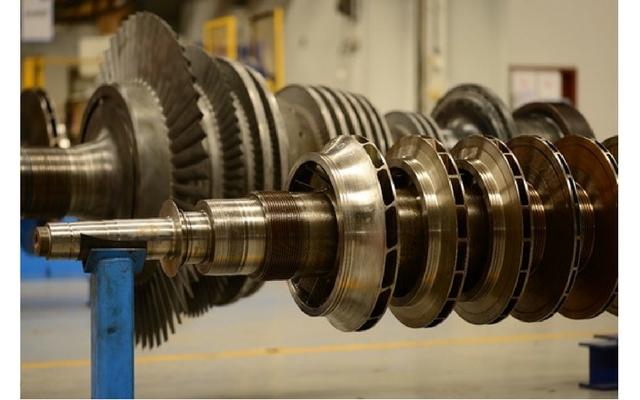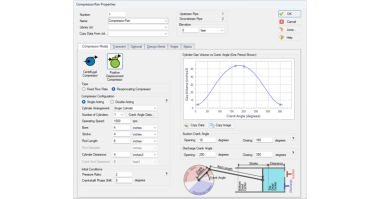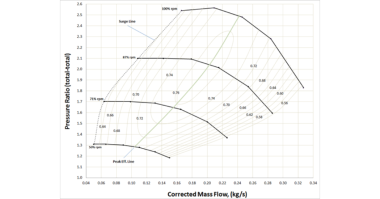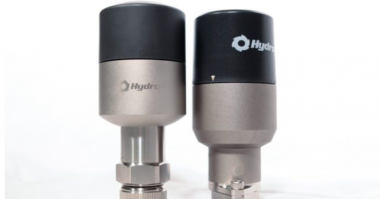“A well applied compressor is the basis of a reliable compression system.”—Robert X. Perez
Author: Robert X. Perez, Machinery Engineer
In this series of columns, I have walked readers through the process of compressor selection. In the previous three articles, I explained that there are three basic steps involved in the compressor selection process: 1) Determining your ACFM requirements, 2) selecting potential compressor design candidates from the GPSA “Compressor Coverage Chart” compressor selection map, and 3) then making the final selection based on compression ratio requirement.
In Part 4, I will briefly explain another approach to compressor selection using the compressor coverage tables shown below. If you know your inlet flow range and the discharge pressure, you can simply locate the compressor types that can handle your conditions by inspecting Tables 1 and 2.
For example, applications requiring an inlet flow of 50 ACFM and a discharge pressure of 150 psig can be handled by rotary screw compressors and reciprocating compressors. However, if you expect an inlet flow of 10,000 ACFM flow and a discharge pressure of 3000 prig, then you are limited to centrifugal (multistage) compressor design options.

Summary:
Here is a quick review of the compressor selection steps presented in this article series:
- Calculate the ICFM flow required for the application
- Plot the ICFM flow and discharge pressure on the GPSA coverage chart
- Record your compressor options based on where your point falls on the GPSA coverage chart
- Calculate the required compression ratio
- Select which compressor types are possible based on the required compression ratio
- The compressor types that satisfy the GPSA coverage chart and the Table 2 should be considered viable options.
Remember that the flow and pressure ranges listed in the selection charts and tables found in this column are approximate. Not all manufacturers may be able to provide compressors capable of operating in flow and pressures listed in these charts and tables.
Take extra care when considering a compressor that may operate at the extremities of the flow or pressure ranges shown in the “Compressor Selection Chart”. Operating at the design limits of these application envelops may lead to compromises that could lead to future reliability problems. When in doubt, ask for help.
I recommend you always work with original equipment manufacturers when making your final compressor selection. They understand the pitfalls of misapplying compressors for real world applications. Remember that a well applied compressor is the basis of a reliable compression system.
About the Author
 Robert Perez is mechanical engineer with more than 35 years of rotating equipment experience in the petrochemical industry. He has worked in petroleum refineries, chemical facilities, and gas processing plants. He earned a BSME degree from Texas A&M University at College Station, an MSME degree from the University of Texas at Austin, and holds a Texas PE license. Mr. Perez has written numerous machinery reliability articles for magazines and conferences proceedings and has authored 4 books and coauthored 4 books related to machinery reliability. He resides in San Antonio, Texas.
Robert Perez is mechanical engineer with more than 35 years of rotating equipment experience in the petrochemical industry. He has worked in petroleum refineries, chemical facilities, and gas processing plants. He earned a BSME degree from Texas A&M University at College Station, an MSME degree from the University of Texas at Austin, and holds a Texas PE license. Mr. Perez has written numerous machinery reliability articles for magazines and conferences proceedings and has authored 4 books and coauthored 4 books related to machinery reliability. He resides in San Antonio, Texas.




